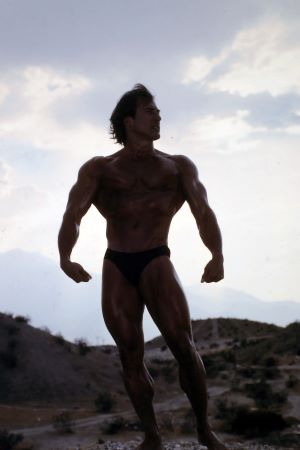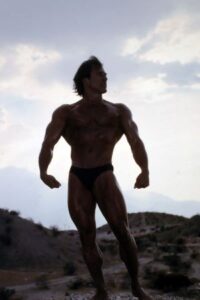Blog 34 – Symmetry Paradox


Silouette 300
The Bodybuilding Symmetry Paradox
Writing Symmetry I discovered its broader meaning. Aside from bilateral symmetry meaning each side is a mirror image of the other, symmetry as it applied to bodybuilding seemed to describe more. The symmetry round in bodybuilding competition involved more than just seeing if the left side matched the right.
Judges were looking for something more than that. They were looking for balance, equal development of all body parts, overall impressiveness, fluid lines. No one area standing out overshadowing all others, not unbalanced development, not freaky but astounding in development, all areas in proper size ratios to give the impression of balance, proportion, aesthetics, and beauty. I call this bodybuilding symmetry.
A good way to judge this overall balance is by studying one’s silhouette. At Arnold’s contests contestants were presented individually as a silhouette but only briefly and then they were lit. I think the outline of the body needs to be looked at more carefully first to judge proportion before judges get distracted by muscular detail. Judging muscularity should enter the judgement later after balance is ascertained.
Early on in my bodybuilding career, to pose the physique in positions that look better I discovered that by placing the body in positions where each side of the body is viewed differently it looked more impressive. So, I began to adapt my poses to show my body in this fashion, that is, I posed asymmetrically. In other words, I became ‘symmetrical’ by posing asymmetrically. Go figure!
When you present yourself asymmetrically there is no opportunity to compare one side against the other so symmetry must be assumed. A good poser knows that he looks better from one side than the other, so he shows this in his presentation and is able emphasize strong points.
My strong points were straight on front and back poses. I had width but not a lot of depth. Anyway, I told myself I’d rather be wide than thick, so I settled for width over density. I preferred the metaphor, and it was what came naturally to me. It was best to emphasize my assets and asymmetrical posing was how I did it.

